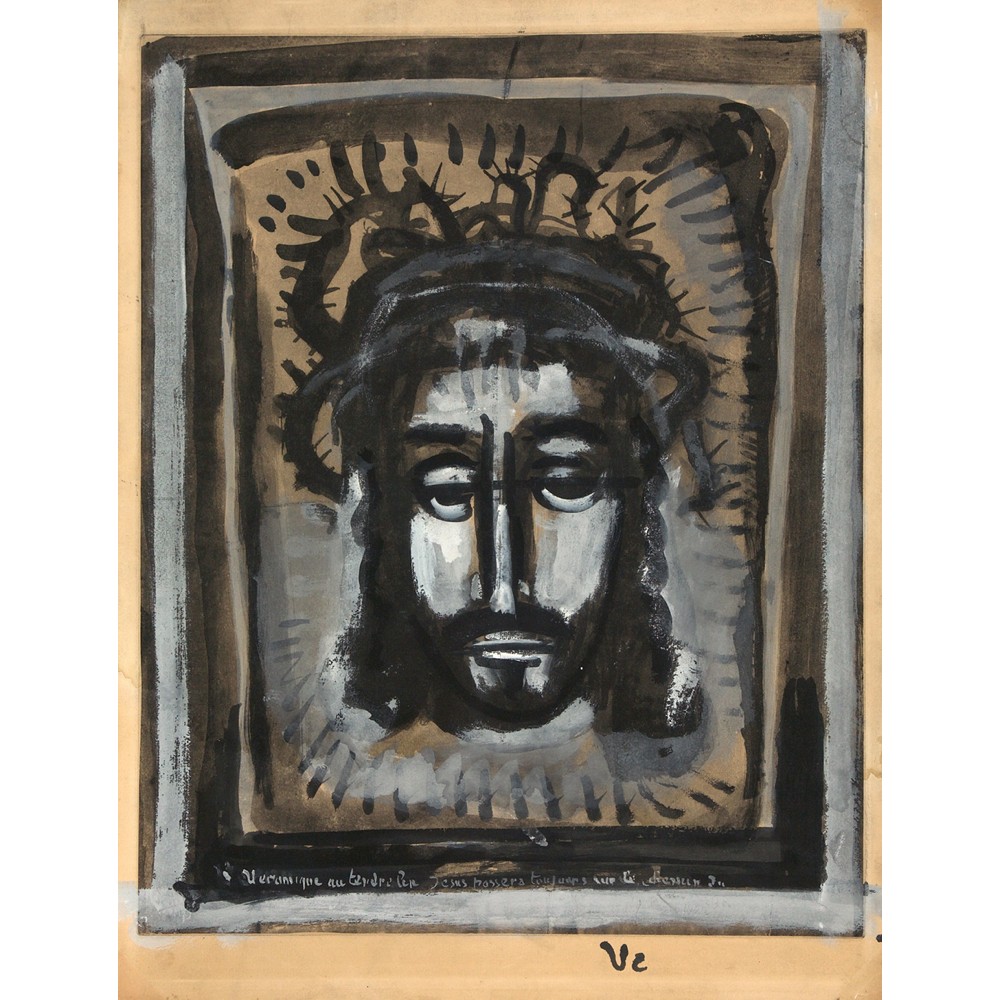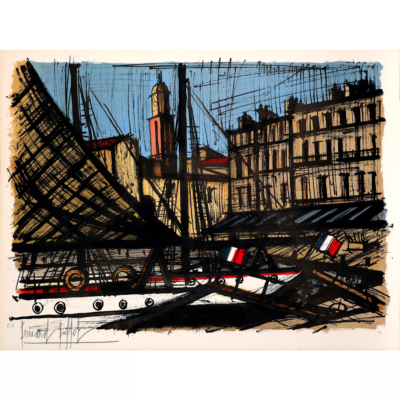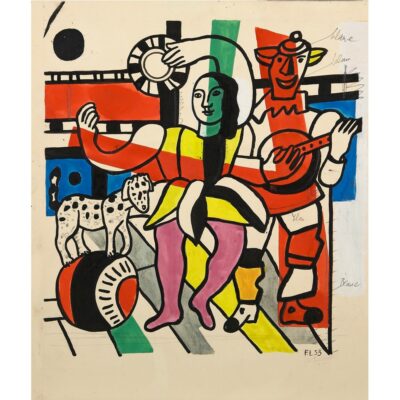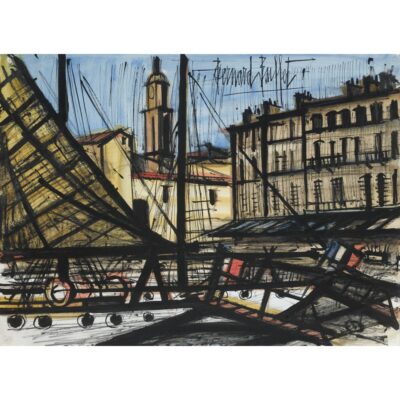Étude Miserere
Georges Rouault
1922
Rotogravure and gouache on paper, study for Miserere, Paris, Edition L'Etoile filante, 1948, plate LVIII bearing the inscription of plate XXXIII
65,5 x 50,5 cm
Single print signed and dated in the plate lower right "GR/ 1922".
Annotated in gouache at the bottom "Véronique au tendre lin Jésus passera toujours sur le chemin du", in pencil in the lower right margin "Véronique au tendre lin", and in black ink "Ve", signed and dated by the artist in the lower right plate.
Unique work
Catalog raisonné : Rouault 86 and 111
Miserere, the ancient word for imploring divine mercy, is a vast fresco of the human condition imagined by Georges Rouault. The artist makes misery, in the sense of both indigence and baseness, the common thread running through the human race. Christ is omnipresent in this work. Both human and divine, he is mankind's clearest link with God and the hope of mercy.
The work was extremely long and tedious for the artist, as can be seen from the various states(see catalog raisonné). The first plates were designed as early as 1914. Printing took place from 1922 to 1927, under the close supervision of Georges Rouault, before Miserere was finally published in 1948.
The Christ depicted, tired and silent, seems very human. But this is not an immediate portrait of his face, but rather that of the cloth Veronica handed to Jesus on the way to the cross, on which his face was imprinted.





